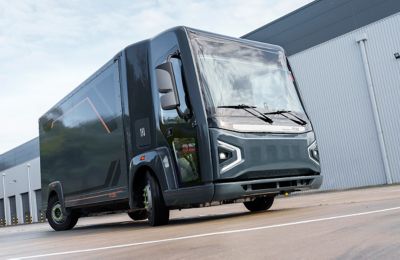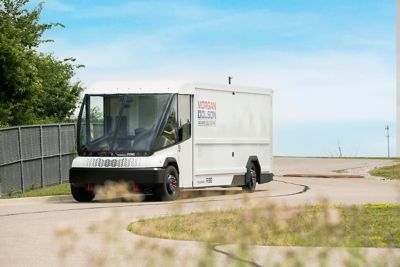-
-
Kostenlose Software für Studierende
Ansys unterstützt die nächste Generation von Ingenieur*innen
Studenten erhalten kostenlosen Zugang zu erstklassiger Simulationssoftware.
-
Verbinden Sie sich jetzt mit Ansys!
Gestalten Sie Ihre Zukunft
Stellen Sie eine Verbindung mit Ansys her, um zu erfahren, wie Simulation Ihren nächsten Durchbruch vorantreiben kann.
Länder und Regionen
Kostenlose Demoversionen
Produkte & Dienstleistungen
Lernportal
Über das Unternehmen
Back
Produkte & Dienstleistungen
Back
Lernportal
Ansys unterstützt die nächste Generation von Ingenieur*innen
Studenten erhalten kostenlosen Zugang zu erstklassiger Simulationssoftware.
Back
Über das Unternehmen
Gestalten Sie Ihre Zukunft
Stellen Sie eine Verbindung mit Ansys her, um zu erfahren, wie Simulation Ihren nächsten Durchbruch vorantreiben kann.
Kostenlose Demoversionen
ANSYS BLOG
December 20, 2022
Ansys and REE Automotive Ltd. Work to Define the Future of EV/AV Safety and Cybersecurity
Electric and autonomous vehicle technology is going modular. What does this look like? Think of it like you would think of a Lego set. Each Lego set includes the plastic pieces and the instructions or foundation to build from. You can follow the directions as you snap pieces together, or you can easily change them up according to your own creative aspirations. You may even add pieces from other Lego sets to this foundation to build something new.
Similarly, modularity is building the next generation of electric vehicles (EVs), autonomous driving technologies, and mobility services, which opens up new and interesting opportunities for aspiring EV manufacturers. It’s a concept built on universal platforms using universal components that can be shared and reconfigured among original equipment manufacturers (OEMs) based on industry standards with vehicle safety and security in mind.
With the help of Ansys, automotive technology company REE Automotive is expected to influence how electric and autonomous vehicles will take shape, built on the concept of modular corners in its P7-B, a class 3, medium-duty box truck. Assembled on an REE P7 cab chassis, all the traction, steering, and brake systems are located in all four corners of the vehicle close to the wheel arch to inform an all-wheel drive, all-wheel steering platform.

REE’s P7-pictured at REE’s Coventry Integration Centre. REE’s plans to implement the cloud-based robotic assembly lines at its network of highly-digitalized global manufacturing plants start with its European Integration Center in Coventry, UK.
The concept enables complete design freedom for OEMs to build virtually any size or shape of electric vehicle on its modular platform. Inherent redundancy in a four-corner design plus a fully modular approach leads to improved efficiency overall with room for more passengers, cargo, and batteries — the basis for REE’s original driving platform, and an important element of electrification.
“We provide the corners and the system controls,” says Ohad Stauber, vice president of research and development, REE. “Because every element of the platform is controlled by wire, we can easily support the autonomous world. Our all-electric P7-B box truck can be piloted equally by a driver, or by software application.”
Cutting Through Data Complexity with Ansys medini analyze
What’s driving the P7-B? REE’s novel REEcorner™ x-by-wire technology, a subassembly that integrates all critical vehicle components, i.e., steering, braking, suspension, chassis elements and vehicle controls, and software into a single compact module between the chassis and the wheel. All four REECorners™ are modular, identical, and completely independent from one another. Each is controlled by its own electronic control unit (ECU) coordinating with an REEcenter ECU or system “brain” positioned in the center of the platform that controls all corner-level functions.
REE models its battery charging systems through Ansys medini analyze, targeting efficiency advantages and compliance with ISO 26262, the international standard for functional safety covering automotive electric/electronic systems.
One major compliance consideration for REE hinges on the performance of its REEcorner™ x-by-wire technology. The technology is critical to delivering driver input (or in the case of autonomous function, data) that informs the operation of all four corners.
Of course, successful x-by-wire system safety validation is an OEM requirement for vehicle development. It’s also a huge incentive for OEMs to take advantage of REE’s forward-thinking approach to system integration. For REE, it all adds up to a whole lot of data and use cases that need to be analyzed quickly and accurately, in step with numerous ISO functional safety guidelines and vocabulary.
Using medini analyze, the REE team can quickly run a full analyses of the functional safety of the platform, REEcorners™, and ECUs with the objective of meeting OEM safety expectations. Medini analyze also facilitates in-house hardware and software evaluation under one roof, alleviating the need for outside integration of tier one data that can lead to errors.
“Safety analysis, whether you’re looking at the rolling chassis, or the full vehicle is a big task,” says Stauber. “One of the most important issues for us is the analysis of our X-by-wire system, the question being, will it comply with current ISO 26262 standards, or not? We expect that our use of the medini analyze will enable us to achieve our unique, four-corner architectural goals and reach the desired functional safety level at the same time.”
When in Cyberspace, Think Like the Enemy
By removing the human driver — the most common cause of traffic accidents — autonomous driving (AD) attempts to deliver on the promise of safety. However, unauthorized access to the artificial intelligence / machine learning (AI/ML) driving autonomous systems poses other risks to drivers, passengers, and pedestrians.
Like traditional IT systems, AD systems are vulnerable to attacks that can ultimately compromise vehicle function. Using medini analyze will assist REE to satisfy ISO 21434, the standard that provides cybersecurity engineering guidelines for processes across various phases of a vehicle’s product life cycle. This requirement includes on-road risk management for autonomous vehicle systems to avoid cyberattacks down the road.
“Hackers are continuously looking for ways to take over autonomous driving functions,” says Stauber. “While most of the time OEMs manage to stay ahead of these system intruders, there’s always the potential for a system breech, through the GPS, Bluetooth, or wi-fi. So, the goal is to block all of these points of attack by using software such as medini analyze, which is expected to help REE assess any potential threats before the vehicle systems ever see pavement.”
As a result of current threat analysis in medini analyze, REE engineers developed a special protocol that is expected to have the ability to remain unknown to hackers while providing exceptional end-to-end system protection. Working to comply with this standard, the software is expected to enable REE to stay ahead of cyber security attacks, as well as government requirements.

REE is joining forces with industry leaders to launch the first drive-by-wire fully electric walk-in step van. This is a class 5 vehicle prototype that features an EAVX and Morgan Olson body design and is powered by REE’s modular P7 platform.
Shaping EV/AV Tech Development, Three Times Faster
REE’s technology is suitable for truck classes 1 through to 6, and is currently prioritizing class 3 to 5 vehicles with its P7 family of corners. This is supported by a completely modular platform sharing software between different gross vehicle weight ratings (GVWRs). It’s a classification based on vehicle weight, as well as the maximum weight of the cargo a truck is able to carry. In other words, the software-tuned platform can respond to weight variances in a highly performative manner.
Similarly, the technology offers the potential to support passenger vehicles with the same hardware and software involving different mechanical components. There are other benefits that can easily be passed on to consumers too, from lower maintenance and component costs to reconfiguration and part swapping opportunities.
“Although we’re no longer considered a start-up, we still have that mentality of moving very fast,” says Stauber. “And that means we have to be agile. We can’t be stuck on a tool that’s not working. Any tools we use must be very strong, and very stable in order to meet evolving ISO requirements. We get very good results from Ansys medini analyze and we expect it will help us to deliver vehicles of the future faster than traditional OEMs.”
Getting More Traction with Ansys Motor-CAD
Besides Ansys medini analyze, REE also uses Ansys Motor-CAD with the intention of simulating and validating its traction and steering motor designs, and to deliver specifications of its motor requirements to vendors. Motor-CAD helps REE evaluate its electric motor technology across a full operating range, resulting in designs that are optimized for performance, efficiency and size. It’s just one of many instances in which Motor-CAD is advancing motor development for electric and autonomous vehicle applications.
“Ansys software enables us to define motor specifications, as well as functional safety and cyber security requirements to our customers,” says Stauber. “We do in-house simulations using Motor-CAD and analyze the data, then provide them with a spec of what we intend to achieve with the models they provide us, along with the relevant safety analysis.”
If you’re at the 2023 Consumer Electronics Show (CES) in a few weeks, be sure to visit Ansys in booth 4401, as well as REE at the Infineon booth and discover how REEcorner technology streamlines the transition to EVs.